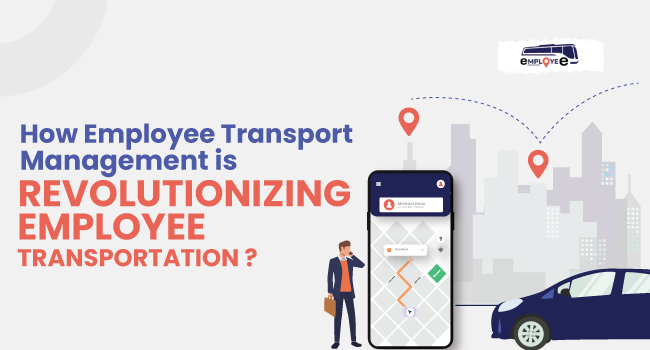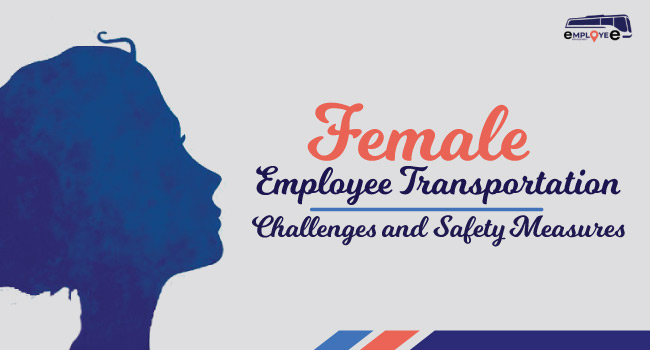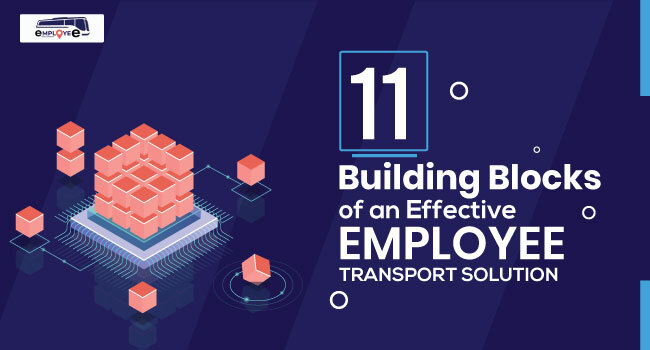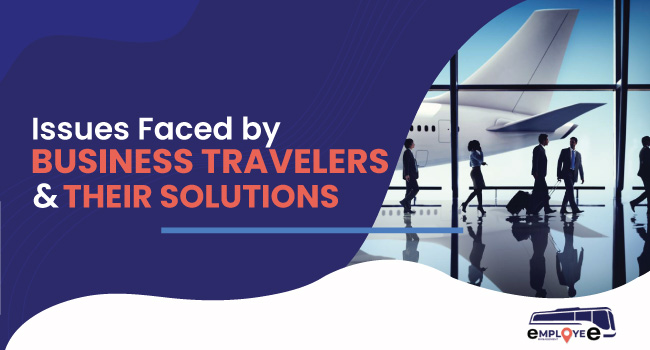How Employee Transport Management is Revolutionizing Employee Transportation
October 13th, 2020

There are basically two types of employee transportation. The first type is for the employees traveling to and from work and the second type is for client visits, conference visits, and business visits. Over the last decade, organizations began to provide free or subsidized employee transport as one of the perks for employees.
What started as a perk for employees has now become essential in many organizations. In this blog, we will trace the development and transformation of the employee transportation system over the years. And look into how the transport management system is revolutionizing employee transportation.
The Early Days of Employee Transportation
Initially, companies started offering transportation to encourage candidates to choose the company and reduce attrition. But soon organizations realized that there were many more benefits in providing employee transportation. Moreover, multinational companies or organizations that were catering to North American or European clients needed to have odd-hour shifts.
Public transportation was not available during such times. It then becomes necessary for companies to arrange safe and reliable transportation for employees. As the need and benefits began to grow, employee transportation became one of the horizontals of the organization.
Read Also: Say Hello to Optimized Employee Transport Management: Here’s Why!
In the early days, company transportation was highly unorganized with the company’s HR or Admin team managing the employees’ daily commutes. However, as the demand for transportation grew, the private transportation sector becomes more organized.
Transportation agencies started to increase their fleet sizes to keep pace with the demand. This growth, in turn, led to the development of fleet management software solutions that help in operating and managing huge fleets. At the same time, the increased dependence on employee transportation also brought in many challenges to the company.
Challenges that Organisations Face in Transport Management
One of the biggest challenges is the cost. The cost of investing in a fleet, maintenance, and fleet management is very high. Some companies manage the expenses by charging employees a subsidized price for availing the transportation system. But even then, the expenses are high.

These days many organizations try to cut down the costs by outsourcing employee transportation services to a third-party service provider. But outsourcing comes with its own set of challenges, the top being the security of the employees. Another challenge is ensuring that the safety regulations and compliance to government regulations regarding employee transportation are followed.
A major challenge is managing the fleet, whether the transportation is being managed inhouse or outsourced. The fleet manager has a lot of responsibilities, including creating the list of employees who need transportation, planning the routes, and scheduling the pickups and drops.
The average headcount of a company is nearly 1000, give or take a few hundred. All the employees don’t work in the same shift. Also, they travel from different parts of the city. This means that the transportation manager needs to consider parameters such as employee count, shift details, location, best route and cost factor before organising the logistics. Manually managing such large numbers can be a huge challenge for anyone.
Plus, as the fleet sizes started to grow and the challenges began to increase, companies turned to software applications for an effective solution. It led to the development of fleet management and employee transportation management software platforms.
Read Also: Employee Transportation Software Facts to Check Before You Choose
The Emergence of the Employee Transport Management Systems
The transportation management systems are bringing about a revolution in employee transportation. They not only help in automating various tasks involved in transport management, but also help ensure the safety of the employees.
Build a database
The software application takes care of one of the huge tasks of transportation managers – building a database. The application allows you to easily enter large volumes of data collected in an excel spreadsheet or other formats.

Once the database updated is in the application, it automatically classifies and sorts employees based on location and shift. It makes it easy for transport managers to plan routes and pickup/drop points.
Seamless fleet management
As we discussed earlier, it is difficult to manually plan and organise transportation for 1000s of employees. The fleet management system automates the entire process once the key details are entered. The software also has an option for the fleet manager to update the trip manifest based on current situations, traffic conditions, and such.
Ensures secure transportation
The fleet management solution also addresses one of the major challenges of providing employee transportation – security of the employees. The application automatically monitors the data obtained from the GPS trackers installed in the vehicles. So, you get real-time updates on the location and the trip status.
Secondly, the application lets you set up a geo fence based on the trip details and location. If the vehicle travels beyond this virtual boundary, the admin and other key persons will immediately get alerts. The responsible authorities can then contact the employees to find out if there is anything untoward happening or if there is any emergency.
Read Also: Role of Geofencing in Employee Transportation
The employees can get the trip details, driver details, as well as approximate pickup or drop time on the app. So, the employee need not wait for a long time at the pickup point. Also, the employee can update the ‘reached safely’ status in the app once they reach home/drop point. This feature is more important when employees are travelling during non-social hours.
Conclusion
From being unorganized to becoming automated, the employee transportation management system has come a long way. As the needs and demands change, the software application will also be updated and upgraded. However, the fact is that this automated system has helped solve many of the problems that fleet managers face while managing employee transportation system.
Fleet managers don’t need to spend a lot of time on the repetitive tasks that can be automated. So, they can focus on developing the fleet and building a better customer relationship. If you are looking for a customized and easy-to-use employee transportation management solution, contact us.





